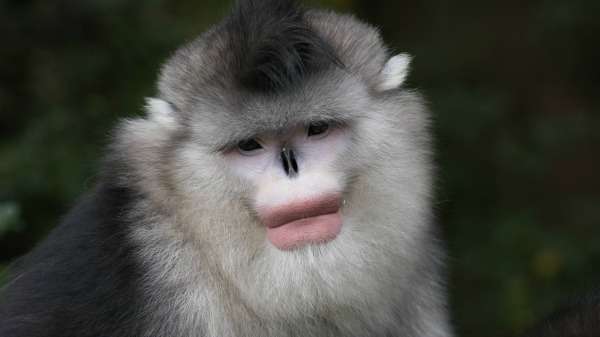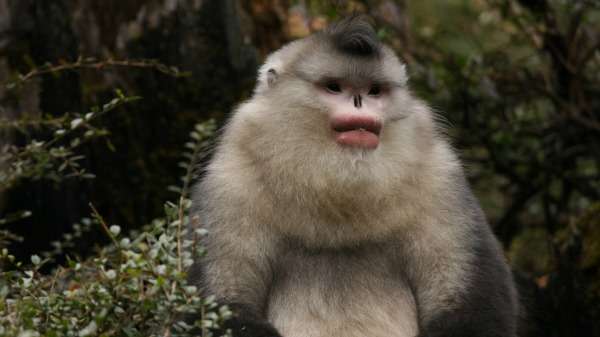A harem-holding snub-nosed monkey. Credit: Pingfen Zhu
If you're looking to impress the ladies this mating season, you need look no further than the cosmetics counter, at least if you're a snub-nosed monkey.
Research led by UWA's Dr Cyril Grueter measured the intensity of lip colour in black-and-white snub-nosed monkeys (Rhinopithecus bieti), finding redness of lips increased with an individual male's age.
They also found that for most of the year, the lips of bachelors and those with multiple female admirers were relatively similar in colour.
Big changes came, however, during mating season, when the lips of younger or bachelor males grew paler, while their sexually successful pals adopted an even richer red.
"Those males with harems of females had much more brightly coloured lips compared to bachelor males that don't have access to females," Dr Grueter says.
"It looks like redder lips indicate higher male quality or status."
These colour distinctions may be a way of avoiding reproductive conflicts, Dr Grueter says.
"By looking at colour, the males know who's ranked above or below them, so just by looking at a brightly coloured male, they know that this guy's dominant," Dr Grueter says.
"There's no need for physical conflict to establish rank."
It's not yet known whether bright lip colour is driven by female preference or male competition.
A harem-holding male snub-nosed monkey. Credit: Pingfen Zhu
The results come after two years of fieldwork in the mountainous Baimaxueshan Nature Reserve in China including time working with a group of snub-nosed monkeys fed by and habituated to humans, but living in the wild.
The monkeys, which have never been seen outside China, are some of the world's most endangered primates.
"These are peculiar primates, among the largest monkeys in the world, and among the most brightly coloured in the world," Dr Grueter says.
"We used an SLR camera and a telephoto lens to get mug shorts of all the different males in the group, and we measured the intensity of lip colouration."
One hundred photographs of 15 males (including seven bachelors) were statistically analysed to determine whether redness had any correlation with age, social status, number of harem females, mating season and/or interactions between age and season.
To accurately measure and compare redness intensity, Dr Grueter's team measured the relative colour contrast between each monkey's face colour and lip colour.
While this approach doesn't provide absolute colour values, it may more reliably mimic the way primates measure colour, Dr Grueter says.
Provided by Science Network WA

























